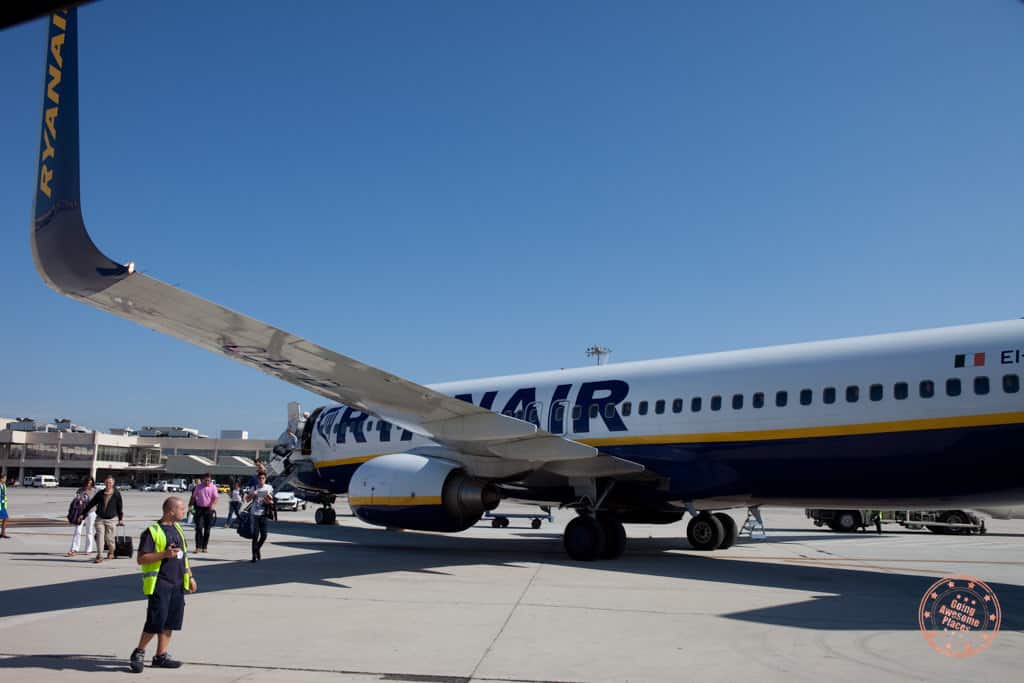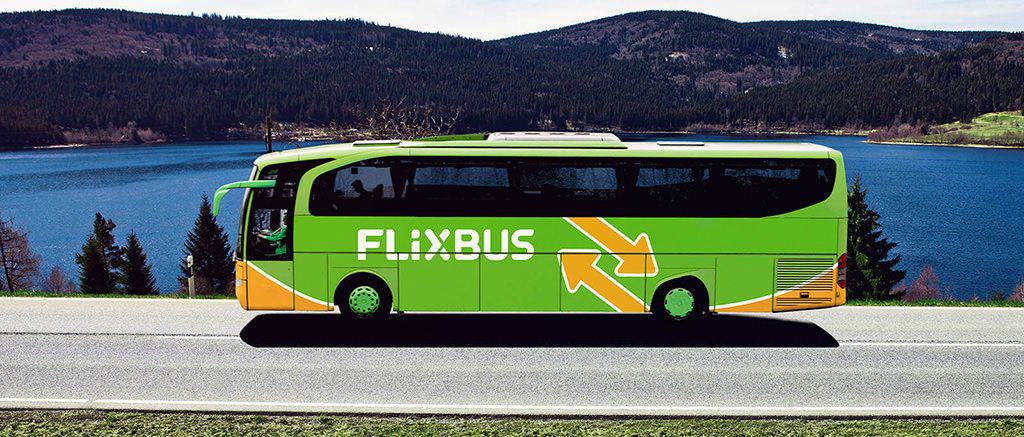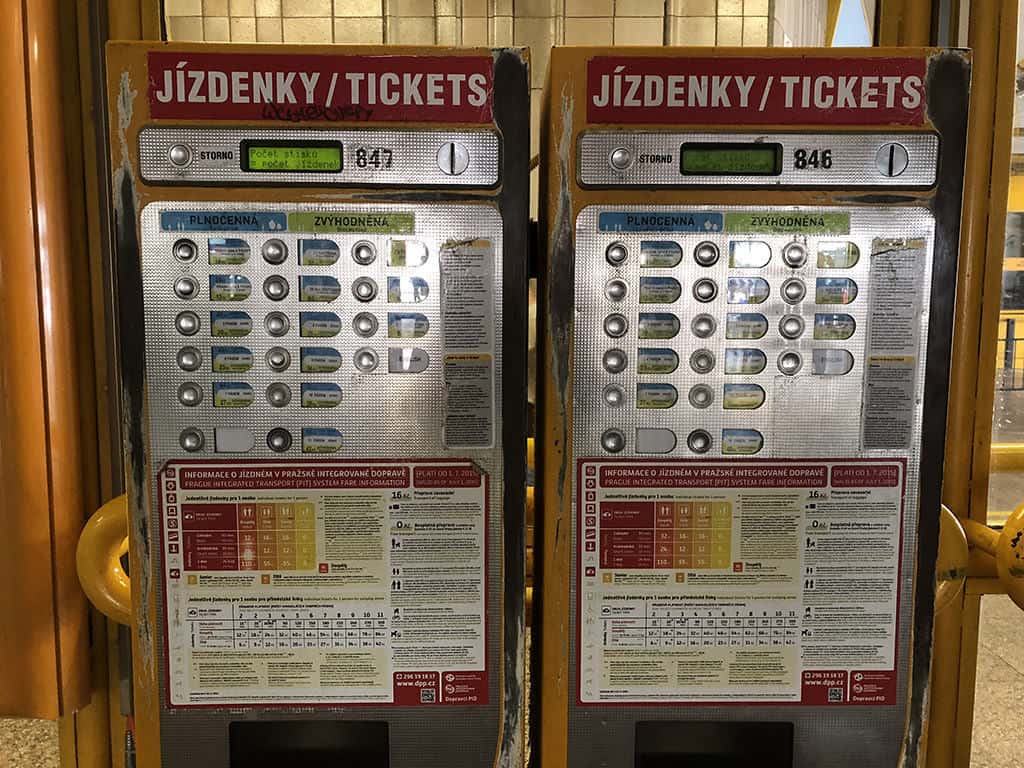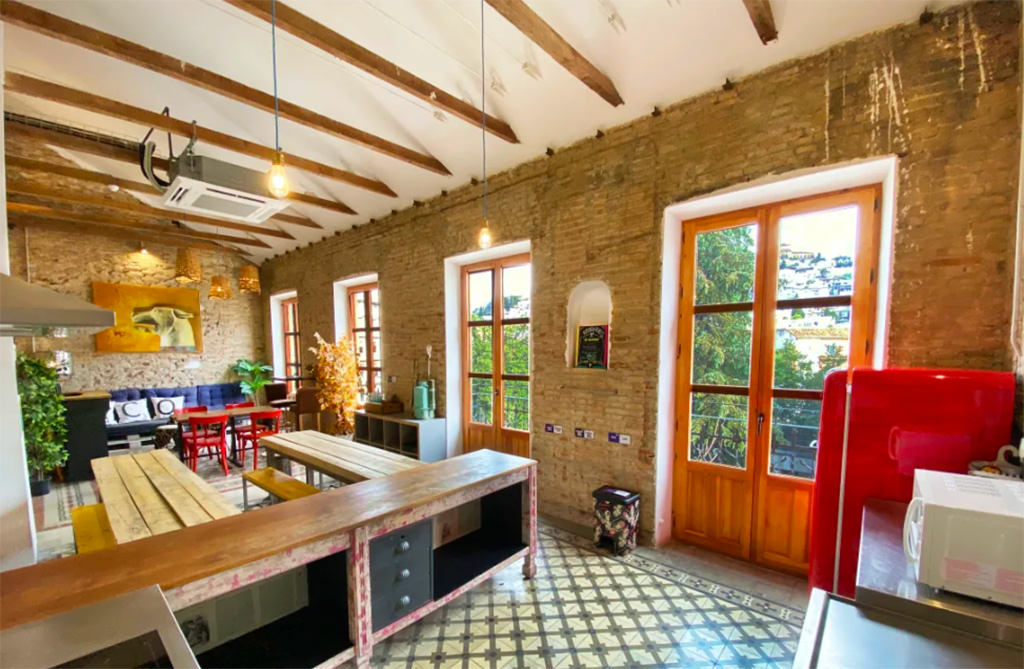We’re uncovering our best strategies for the cheapest way to travel Europe, so you can spend less on logistics and more on gelato in Italy, tapas in Spain, or walking tours through Poland and Croatia.
This article may contain paid links where we make a small commission for purchases you make from links that you click from this article. By purchasing through our links, you support us at no additional cost. Thank you for your support ❤️. For more details, read the disclosure page.
I can remember when I was a broke exchange student living in Europe. I wanted to explore, but my budget was tight, so I had to squeeze every euro to make it count. Finding cheap flights or snagging a last-minute train travel deal became addictive, it was almost like a game. The thrill of scoring a ride to Paris, London, or Amsterdam for the price of a Big Mac combo in Sweden was unbeatable.
It wasn’t called travel hacking back then, but that’s exactly what we were all trying to figure out, students and backpackers alike, roaming across Western Europe and venturing into Eastern Europe on the smallest possible budget. Over the years, we’ve collected a bunch of secret tips and tricks to save money, whether that’s dodging baggage fees with only a carry-on, timing trips in shoulder seasons like September or October, or grabbing discount buses like Eurolines.
What You’ll Get Out Of This Article
- Insider tips on finding the cheapest flights and trains across Europe.
- Smart strategies for budget-friendly accommodations and daily living costs.
- Creative ways to save money or even make some while traveling.
- Practical hacks for local transport, sightseeing, and city hopping.
- Tried-and-tested advice for stretching every euro without sacrificing fun.
The Cheapest Way To Travel Europe

TOP TIPS FOR TRAVELING EUROPE
- Where to stay – Get smart with accommodation bookings and build up points with every stay. We use Booking.com for all of our stays and use the Genius discount to get great deals on our hotel bookings. Alternatively, you can always see if hotel corporate codes might work for you.
- Must-pack item – You’ll be doing a lot of walking so a comfortable pair of walking shoes is essential for exploring Europe’s cities and rural towns.
- Before you go – Learn a few basic phrases of whichever countries you are planning to visit. The effort will go a long way. You can get your practice in with Rosetta Stone or there’s always Google Translate of course.
- Car rentals – There are few things more epic than a European road trip, it isn’t the most budget friendly, but you can save money using these car rental coupon codes. Start your search with Discover Cars and RentalCars so you know what the prices are across all companies.
- Flights – Wherever you are flying in from use the Skyscanner “Everywhere” feature to find the best deals to awesome European cities. Check how much it would be for you to fly around Europe!
- Insurance – Not always required but always recommended! Make sure you’re covered with the best travel insurance. Our go to is always HeyMondo, the rates are great, and it has solid all-round coverage. Also, with our link you automatically get 5% off!
- Hottest deals – Make sure to bookmark our frequently-updated travel deals page.
The perception is that Europe is expensive, but traveling here on a budget is absolutely possible if you plan ahead and know a few tricks.
From snagging cheap flights with tools like Google Flights to timing your trip in the off-peak season – think September, October, or even January – there are plenty of ways to cut costs without missing out.
The key is deciding where you want to save and where it’s worth spending a little extra. Maybe you’ll splurge on a scenic train travel route through Italy or Portugal, but keep things lean with free walking tours in Dublin or Poland. Or maybe you’ll focus on budget airlines like Norwegian while sticking to just a carry-on to dodge extra baggage fees.
Of course, some costs are non-negotiable, like travel insurance, but everything else is up to how flexible and creative you want to be.
How To Hack Cheap Transport In Europe
Traveling Europe on a budget is all about being smart with transportation. With so many options, cheap flights, budget airlines, train travel, buses, and even ride-sharing, it’s possible to cross entire countries without breaking the bank.
The key is knowing when to book, which carriers to trust, and how to take advantage of off-peak seasons and hidden deals.
Below, we’ll break down the best strategies to move around European country’s affordably while still making the most of your time.
Find The Best Budget Airline Deals

One of the best parts about traveling through Europe is just how easy and cheap it can be to fly between countries. Distances are short, competition is fierce, and low-cost carriers like Ryanair, EasyJet, Wizz Air, Norwegian, and Eurowings constantly push prices down.
With the right timing, you can find cheap flights for under €50 or £25, making a weekend in Amsterdam, Milan, or Spain more affordable than you’d think.
Of course, you get what you pay for: these flights are no-frills, and airlines make their money back with baggage fees, strict carry-on rules, and less convenient airports.
Some routes fly out of secondary hubs far from city centers, so always double-check your departure and arrival airports before booking.

Sure, you’re not going to get a world-class experience, and they will probably nickel and dime you for every bag and every pound you’re overweight, but when flights cost less than 50 Euros or say 25 Pounds to get from A to B, you’re laughing!
In a way you get what you pay for so brace yourself for a little bit of discomfort, but you really can’t complain about these ridiculously cheap fares.
How to find cheap flights in Europe:
- Use flight search engines like Skyscanner to compare routes and spot the cheapest dates. Big names to look out for are Ryanair, Easyjet, Wizz Air, Air Berlin, and Euro Wings.
- Subscribe to price alerts for your specific route to make sure you are the first to know when fares drop. This way you get daily or weekly notifications for when prices changes. See prices bottoming out? Jump on it while you can!
- Stay flexible: Use Skyscanner’s “Everywhere” feature to keep your travel plans open ended. If you have dates in mind for a holiday but are flexible to go anywhere in Europe, just type in “Everywhere” as your destination and see what it comes up with.
- Look for seasonal dips: flights in September, October, April, and January (outside the busy summer months) are usually much cheaper thanks to shoulder seasons and off-peak season pricing.
- Proactively get flight deal alerts: Subscribe to become a Going Awesome Places Insider and get weekly flight deals straight to your inbox. Currently departures are covered from the UK and the Netherlands if you’re already in Europe.
Budget Airlines & Carry-On Strategy
Flying with Europe’s low-cost carriers can save you a ton of money, but only if you know how to work around the hidden costs. The biggest one? Baggage fees.
Airlines like Ryanair, EasyJet, and Norwegian often charge more for checked luggage than the flight itself, which can quickly wipe out your savings.
The best strategy is to travel carry-on only. Not only will you avoid extra charges, but you’ll also save time at the airport by skipping check-in lines and baggage claim.
Just be sure to check each airline’s rules carefully, what counts as a “personal item” with one airline might be considered a full carry-on with another.
Tips for keeping it cheap:
- Weigh your bag before leaving for the airport – fees for being even 1kg over the limit can be brutal.
- Use a personal item smartly: backpacks often fit under the seat and count as your free bag.
- Pack light and layer: wear your bulkier clothes (like jackets and boots) on travel days to save space.
- Book round-trips smartly: sometimes it’s cheaper to book two one-way tickets with different carriers than a single return flight.
PACKING FOR A TRIP TO EUROPE
We’ve compiled a helpful list of must-needs items to pack for a trip to Europe! Check it out!
The Ultimate Summer In Europe Packing GuideWhen you factor in these tricks, flying around Western Europe or even Eastern Europe can be just as affordable, and sometimes faster than taking the bus or train.
Train Travel & Rail Passes
In Europe, buses and trains are everywhere, and depending on your route they can be cheaper, easier, and more efficient than flying. Let’s break down why both are worth considering when you’re traveling on a budget.
The Bus

It’s not as glamorous as hopping on a plane, but buses are often the cheapest way to get around Europe, sometimes even more affordable than trains. Thanks to low-cost companies, you’ll regularly find fares for just a few euros. It’s not uncommon to hear about tickets for 2 Pounds or 5 Euros, making buses a no-brainer if you’re flexible on time.
Just like the airline industry, buses have also been disrupted by low-cost companies. That’s why you hear of those incredible stories of bus fares for as little as 2 Pounds.
The biggest name now is FlixBus, which took over Megabus’s European routes and continues to expand.
With fares for as little as 5 Euros one way, you really can’t beat them on price especially when you factor in the convenience and flexibility. Their app makes it simple to check schedules and buy tickets.
Other bus options are more regional: National Express in the UK, SNCF in France, DB in Germany, or RegioJet in the Czech Republic.
Don’t forget about Eurolines, which offers affordable long-distance routes across both Western and Eastern Europe. To compare them all in one place, check Omio (formerly GoEuro).
So why the bus?: This is for the ultimate procrastinator or spontaneous traveler since bus fares are easy to cancel and almost always have spots available. Also keep in mind that with buses, you can get on and off near the center of the city and you don’t have to deal with airport security.
The Train

The train is similar to the bus where you have the advantage of being able to hop in right in the heart of the city but you also get the added benefit of having often a much more scenic ride, is quite often high-speed, and offer more expansive route options.
The trade-off is that trains are rarely the cheapest option unless you plan ahead.
Here’s how to save on train travel in Europe:
Book early: Fares are released in tiers, with the cheapest tickets often selling out first. They’re usually broken down into different fare classes, the cheapest fare are almost always non-refundable and there’s a limited number available. As you can imagine, these get snatched QUICK. While it’s hard to keep track of when these tickets are released, your best option is to try to book as early as you possibly can to lock in low prices.
Check the regional train’s site for promotions: Operators like DB (Germany) and SNCF (France) frequently run hidden specials but they’re sometimes a bit hidden. Group discounts, super saver fares, and regional offers can cut costs dramatically. Usually, the website’s have a slightly hidden page like DB’s offer page. If you take a look here, you’ll see things like group offers, super saver fares, regional offers etc. For example, groups of six or more can sometimes travel within Germany for as little as €19.90 per person.
Get a Eurail pass: If you’re going to be spending a lot of time bouncing around between cities and countries within Europe, you may be better off getting an all-encompassing pass that will cover all of your train tickets instead of buying them individually. Eurail sells passes of varying length, country coverage. This requires a bit of research on your part to see if it’s worth it. Figure out if assembling your own set of cheap non flexible tickets is cheaper than buying one pass. The big advantage of the pass is that if you’ve got one that’s valid for a month and you decide to change your travel plans, you’ve got a lot more flexibility. They’re especially handy during shoulder seasons (April, September, October, November) when crowds are thinner and you want the flexibility to change plans on the go.
So why the train?: Central train stations are well…central, there isn’t any airport security to deal with, the routes can be incredibly scenic, seats are usually much more comfortable, they’re punctual, the network is expansive, and can be very fast.
Bottom line? Buses win for ultra-low fares and last-minute trips, while trains are the smarter choice if you book in advance or value comfort, speed, and flexibility.
Buses & Eurolines Alternatives

Flying and trains aren’t your only options for long-distance travel in Europe. While Eurolines used to be the go-to for budget cross-border bus routes, today there are several great alternatives, and even more creative ways to travel cheap.
One of the best is BlaBlaCar, a long-distance carpooling platform that connects travelers with drivers already heading in the same direction. Think of it as ridesharing for road trips. Depending on your timing and availability, you can snag an incredibly cheap ride, sometimes even less than the price of a bus ticket.
The platform is well-established and operates across much of Western and Eastern Europe, with safety features like verified profiles, ratings, and reviews to make the experience more secure.
Many travelers compare it to Airbnb or Couchsurfing, since it’s built on trust and community, and it’s become a reliable way to move between cities.
Another perk? Drivers often pick up and drop off in more convenient spots than bus stations or airports, saving you from expensive taxis or transfers at your destination.
If you’re flexible, adventurous, and want to keep costs lower than even a Flixbus or Eurail ticket, BlaBlaCar and similar platforms can be a surprisingly fun and affordable way to get around.
Budget-Travel Cheat Sheet
- Travel off-peak: April, September, October, November, January are cheaper and quieter.
- Book early for trains: Train tickets are cheapest when reserved weeks in advance.
- Use Google Flights & multi-city tickets to explore multiple places affordably.
- Carry-on only: Avoid baggage fees on cheap flights.
- Skip taxis: Walking tours and public transit are cheap and immersive.
Use Public Transit The Right Way

We get it, sometimes it’s tempting to hail an Uber or call a cab. If you’re super thrifty (*putting our hands up*), you’re okay to endure a little bit of inconvenience to reap the rewards of…not spending as much money.

A great example is from our recent trip to Prague. Upon landing, we could’ve easily hopped on a cab from the airport into the city, but it would’ve cost 30 EUR or more.
Determined to save money, we did our research and found that there was a perfectly reasonable public bus that could take us to the subway and from there we could get to anywhere we needed to. This only cost $2 CAD.
When you’re in a new country, you’ll be drawn to the easy options, but if you have wifi, do a quick search and you’ll find the cheapest way to get somewhere. Public transit is almost always the cheapest and multi-day passes can work in your favor too if you’re jumping around a lot.
BEST PHYSICAL SIM CARD IN EUROPE
Don’t be without data on your Europe trip. Check out what we liked most for ours!
The Best Europe SIM Card For Data – A Review of KnowRoamingIn many cases, we end up saving money by just walking to avoid buying a metro ticket if we only need it for one or two stops.
Smart Booking Strategies
Booking smart isn’t just about saving a few euros, it’s about stretching your travel budget so you can do more, see more, and enjoy more.
With a few clever tricks, timing your reservations and picking the right options can make the difference between a stressful trip and one that feels like you’ve hacked Europe itself.
Let’s dive into the best ways to make every booking count.
Book Things In Advance

We’ve traveled enough to know that waiting last minute for deals is an urban myth. Sometimes they come up, but 9 times out of 10, you’re worse off than if you booked something earlier.
We’ve been burned too many times not buying a ticket ahead of time only to realize when we’re at our destination that something is sold out or you can only get in if you bought admission ahead of time.
A few specific attractions in Europe that definitely need to be booked in advance are:
- Florence – Statue of David at the Accademia Gallery
- Barcelona – Parc Guell
- Barcelona – Sagrada Familia
- Paris – Louvre Museum
- Paris – Eiffel Tower
- Rome – The Vatican and museums
Save with Go City cards
Another great way to stretch your travel budget in Europe is with a Go City card. These passes are available in several major European cities and bundle together top attractions, museums, and tours for one discounted price. Instead of paying full price at each site, you pay once for the pass and enjoy big savings sometimes up to 50%.
The real benefit? Flexibility and value. You can choose between an “All-Inclusive Pass” (ideal if you want to see as much as possible in a set number of days) or an “Explorer Pass” (pick a set number of attractions and use them at your own pace). Both options help you plan ahead, keep costs down, and avoid ticket stress on the ground.
Using a Go City card can quickly pay for itself. For example, if you plan to visit three or four of the top attractions in one city, the pass is usually cheaper than buying tickets separately. Plus, many passes include skip-the-line entry, which saves you time as well as money.
Where you can use a Go City card in Europe:
- Amsterdam: Access 40-plus attractions like the Rijksmuseum, Heineken Experience, canal cruises, A’DAM LOOKOUT, and THIS IS HOLLAND. You can save up to 50% vs buying tickets individually. For example, an All-Inclusive Pass itinerary shows €189 worth of admission over two days dropping to €89 with the pass.
- Barcelona: Here Go City includes landmarks like Sagrada Família, Casa Batlló, Hop-on Hop-off tours, and parks/museums. Savings usually come from skipping pricey single tickets for the top sights and combining walking tours / museums under one pass.
- Dublin: Go City Dublin gives you entry to many of the city’s heritage and cultural spots: Dublin Castle, Trinity College, some guided tours, plus perks like hop-on hop-offs. It helps tourists avoid paying full price for multiple museum admissions and transport-package style combos.
- Gothenburg: Smaller city, but Go City Gothenburg typically covers key museums, perhaps a garden or wildlife attractions, and boat or city tours. If you plan to visit multiple paid sites, the pass reduces costs vs buying each ticket, especially in summer.
- London: The London Go City pass gives access to 100+ attractions including Tower of London, Westminster Abbey, The London Eye, hop-on hop-off buses, river cruises, etc. Example: A 3-attraction Explorer pass can save 25-30% if the individual entries are expensive.
- Madrid: In Madrid, the card includes major museums like Prado, Reina Sofia, Thyssen, and other attractions/tours. The savings are especially strong if you like art and culture and plan to visit multiple big museums rather than just one or two.
- Paris: Go City Paris gives access to 100+ attractions: e.g., Louvre, Arc de Triomphe, Seine cruises, Versailles, guided tours, hop-on/hop-off. If you plan to see many landmarks in a short time, an All-Inclusive or Pass Plus option delivers strong value vs individual entry fees (which add up quickly in Paris).
- Prague: The Prague pass includes historic sites like Prague Castle, Old Town Hall, various museums, walking tours, possibly river cruises. Big savings appear when you combine museum entries and tours rather than paying one-off, especially for major attractions.
- Rome: Rome’s Go City gives you access to things like the Colosseum, Roman Forum, Vatican museums (in some pass levels), and other historic monuments. Given the high single-ticket prices for major sites in Rome, a pass can significantly reduce costs, especially in peak tourist times.
- Stockholm: Stockholm’s card typically covers many museums (Vasa, ABBA), boat tours, and city sightseeing. If you’re planning to hit multiple museums + take a cruise or tour, the pass will often pay for itself vs individual fees, especially in summer when museum entry is most in demand.
Helsinki Card: Separate to Go City, Helsinki has its own version. It is an all-in-one pass that covers entry to 50+ attractions, including the Ateneum Art Museum, Suomenlinna Fortress, and Temppeliaukio “Rock Church.” It also includes sightseeing tours by bus or boat and, with CITY or REGION versions, unlimited public transport making it a smart way to save.
Take Advantage Of Travel Rewards

We won’t get too deep into credit card hacking here but with all of those juicy travel credit cards out there and their accompanying sign-up bonuses, get rewarded for spending money as you normally would back home.
For instance, if you sign up ahead of time for one of those great Canadian travel hacking credit cards and meet your spend threshold to grab those sign-up bonuses, you can then take those points or travel rewards and redeem them for that upcoming trip to Europe.
Travel Hack: If you don’t think you’ll be able to spend enough on a credit card to make the spend threshold, all you have to do is make a refundable hotel booking in the future that charges you immediately and simply cancel the booking after you’ve gotten and spent your bonus.
Budget-Friendly Stays & Daily Costs

Staying on budget doesn’t have to mean roughing it. With a few smart choices, think hostels with a twist, guesthouses in great locations, and clever daily spending, you can keep your euros in check while still experiencing the best of Europe.
It’s all about stretching your money without missing out on the fun.
Scope Out All Your Accommodation Options

Today, there are so many options when it comes to finding an affordable place to stay. A lot of it comes down to your personal preference, your length of stay, how many people you’re traveling with, and how comfortable you want to be.
Let’s run down what options you have:
- Hotel – The tried-and-true way that ranges from super luxurious to very run down.
- Bed & breakfast – These are usually family-run boutique hotels that may or may not serve breakfast.
- Hostels – The bread and butter of backpackers in Europe, some do also have private room options.
- Vacation rentals – Synonymous with Airbnb, these are personal properties up for short-term rent.
- Couchsurfing – The cheapest way to travel because it’s free and a great way to meet people.

To make sure you’re getting the best offer, here’s what you should do:
- Decide which types of accommodations you’re okay with
- Do broad search for each type of accommodation and compare prices
- Factor in discounts you’ll find on our active deals page
- Divide the total by how many people you’re sharing the room with
- See which type comes out on top
Now this is a bit over-simplified, but the bottom line is that you should do your homework and compare prices, weigh the advantages and disadvantages of each and choose a property that gives you good overall value.
Who do we use?: We usually use a combination of Booking.com, Airbnb, and Hostelworld.
Travel Hack: Many promotions only apply to when you first create an account. You can get around this by signing up with your same e-mail address but either adding “+1” before the @ or move a period around.
For example, a fictitious email like [email protected] is the same as [email protected] or [email protected]. All of them go to the same inbox but most systems treat these as a completely new e-mail address.
If you are one to travel on the more adventurous side, check out our tips to save money on backpacking through Europe!
How To Backpack Europe On A BudgetSlash Food And Laundry Costs While Traveling

The two things that many don’t like to do while traveling; eating food you cook yourself and washing clothes with soap and water, will most definitely save you a ton of money.
Eating at restaurants in Europe isn’t always cheap and so if you can cook with basic groceries at your own accommodations, think about all those extra Euros you can save to do more exciting experiences.
Handwashing your clothes is another skill that every traveler should know. Laundromats are notorious for ripping off tourists, especially in central areas. Save those Euros that you would’ve had to pay for one load and instead wash your clothes as you go along. You won’t have to worry about dirty clothes.
Get Creative Looking For Deals
So, what are other ways to find cheap deals for your upcoming trip to Europe? It really comes down to a few more creative ways that we thought we’d just throw in at the very end. It’s all about being scrappy right?
- Anytime you book something and you see a field for “promo code” or “discount code,” do a search on Google first or check out our deals page to see if something’s been posted. You just might find a free discount.
- We haven’t even mentioned car rental yet. They may not be the cheapest way to go but if you’re traveling to more remote places without dependable transit, this may be your best bet. Make sure to check out our complete list of car rental coupon codes for deep discounts.
- Travel during low season if you can. This may sound obvious, but you’ll notice that prices for hotels and flights will go down when you travel at less desirable times of the year. The tradeoff is possibly poor weather, but you could get lucky and have an amazing time without the crowds and the price tag.
Extra Savings Hacks
Sometimes the little tricks make the biggest difference. From scoring last-minute tickets and snagging student discounts to finding free walking tours and off-peak deals, these extra hacks can seriously stretch your budget and make you feel like a travel ninja while you’re at it.
Bring Your Student ID
Believe it or not, your student ID has significant value when traveling in Europe. Many attractions have a student price. All you have to do is flash your card and get 20-40% off regular admission.
And if you happen to have an student card that doesn’t have an expiry date on it, even better!
Make Money While You’re Away
So far we’ve been talking about cutting costs, but here’s a way to actually earn money while you’re traveling. If you have a flat or apartment that will be empty during your trip, listing it on Airbnb (or a similar platform) can generate extra cash to fund your adventures.
That said, it’s important to know that many cities now have strict regulations. Some require hosts to register their property, obtain licenses, or limit the number of days you can rent. Others have zoning rules or special taxes for short-term rentals. For example, cities like Barcelona, Paris, and Berlin have very specific rules designed to prevent housing shortages, so it’s crucial to check local regulations before listing.
If it’s allowed, the potential earnings can be substantial. In a city like Brussels, hosting your apartment for a month could bring in around €1,380, while in London, you might earn closer to €3,500. That’s enough to cover rent or significantly offset travel expenses—but always make sure you’re complying with the local rules to avoid fines or penalties.
Take Advantage Of Free Walking Tours & Local Transport
Europe is full of amazing cities that you can explore without spending a fortune, sometimes all it takes is a pair of comfortable shoes. Free walking tours are a brilliant way to see the sights, learn the history, and meet other travelers all without shelling out for a guidebook or a pricey tour. Just remember, tipping the guide is customary if you enjoyed it.
For getting around once you’re there, ditch taxis and opt for local transport whenever possible. Metro, trams, buses, and even city bikes can get you practically anywhere for a fraction of a taxi ride.
Many cities also offer travel cards or multi-day passes, which save you even more if you’re planning to explore a lot. A little planning here goes a long way in keeping your daily costs low while still getting around efficiently.
We hope you enjoyed that guide on how you can travel Europe with a budget and get around for cheap. A lot of this comes from personal experience over the years.
If you have any questions or your own suggestions, feel free to drop a line below!
Frequently Asked Questions
What’s the cheapest way to travel to Europe?
The cheapest way to travel to Europe from the US, UK, or other countries is to search for low-cost flights using comparison sites like Skyscanner or Google Flights. Budget airlines like Ryanair, EasyJet, and Wizz Air often have fares under 50 Euros. If traveling within Europe, consider buses like FlixBus, carpooling with BlaBlaCar, or flexible travel dates to maximize savings.
Where is the cheapest place in Europe to fly into?
Some of the cheapest cities in Europe to fly into are major hubs served by budget airlines. For Western Europe, consider London, Dublin, Amsterdam, or Milan, while in Eastern Europe, Warsaw, Krakow, Budapest, and Prague often have very low fares. Booking early, traveling during shoulder or off-peak seasons, and comparing prices on Google Flights or Skyscanner will help you find the best deals.
What is the cheapest month to fly to Europe?
The cheapest months to fly to Europe are typically January, February, and November, when demand is lower and airlines drop prices after the holiday rush. Avoid peak summer months like June to August, and major holidays such as Easter and Christmas, as fares can be significantly higher. For the best deals, use flight comparison tools like Skyscanner or Google Flights and set up price alerts to catch sudden drops.
Is it cheaper to train or Fly around Europe?
It depends on your route and timing. Budget airlines can be super cheap for short hops, while buses and trains, especially with early booking or passes, can sometimes beat flights. Trains are scenic and city-center convenient; flights win for ultra-low fares if you watch for fees.
Is $2000 enough for an Europe trip?
Yes! $2,000 can cover 2–3 weeks in Europe if you plan wisely. Focus on budget flights, affordable accommodation, public transport, and self-catering meals. Using travel hacks like student discounts, reward points, and free walking tours stretches your money even further.
Travel Resources For Your Next Trip
If you’re in the process of planning your trip and putting together your itinerary, these are genuinely the best resources that the Going Awesome Places team stands by 100%.
Credit Cards
Don’t get burned by hidden fees on top of terrible exchange rates. When we travel now, we use the Wise Card. Simply load it with the currency you need before you go and use it as a regular VISA or their digital wallet card. Use their free app to track how much you have and top up when you need to.
Flights
In our opinion, of all the booking search engines, Skyscanner is the most helpful and easy to use thanks to their Everywhere feature. Kayak is also another that’s we will often check.
Rideshare
You probably already have accounts but if you don’t, for new Lyft users, use code WILLIAM4825 to get 50% off your first 2 rides (max $10 USD per ride). Offer valid for 14 days after you take your first ride. For new Uber users, use code psuqbjg4d7rn for the same offer except it’s valid for 30 days.
eSIM
eSIM: Lately, we’ve really loved using eSIMs. We’ve tested several over the years and we have access to a few special promotions.
- AmigoSIM – Use GOINGAWESOMEPLACES to save 25% off. Code is re-useable.
- Gigsky – Use TANG149 to get $3 USD when you sign up, then use code GOINGAWESOME to save 20% on all eSIM orders.
- Airalo – Use referral code WILLIA9500 to get $3 USD credit on your first purchase.
- KnowRoaming – Use code GAP10 to save 10%.
- AloSIM – Use code GOINGAWESOMEPLACES to save 15%.
- Ubigi – AWESOME10 to save 10% on your first order.
- Holafly – Use code GOINGAWESOMEPLACES to save 5%.
Wifi Hotspot
We’ve been a huge fan of wifi hotspot devices such as PokeFi (use code GAP24300) because their rates are are hard to beat and it works globally. Solis is another that we recommend. Pros are that you can share the wifi with your whole group but cons are that you have to invest in a device and you have to charge it every night.
Hotels
Our go-to is Booking.com because they have the best inventory of properties including hotels and B&Bs plus they have their Genius tier discounts. Expedia is also worth using especially with their One Key rewards program which is basically like cash. The exception is Asia where Agoda always has the best prices. Always do a quick check on TripAdvisor as well.
Tours and Activities
When planning our trips, we always check both Viator and GetYourGuide to at least see what’s out there in the destination that we’re going to. They often have different offerings and prices so check both.
Travel Insurance
Learn how to buy the best travel insurance for you. This isn’t something you want to travel without.
- HeyMondo – Popular insurance provider for frequent travelers and comes with great coverage and special perks. By booking through our link to get a 5% discount!
- RATESDOTCA – Search engine Canadians looking for the cheapest insurance including multi-trip annual policies.
- SafetyWing – A perfect fit for long-term nomads.
- Medjet – Global air medical transportation.
- InsureMyTrip – Best for seniors, families, and those with pre-existing conditions.
Check Out Our Toolbox
If you need more help planning your trip, make sure to check out our Travel Toolbox where we highlight all of the gear, resources, and tools we use when traveling.



















 English (US) ·
English (US) ·